Mini-splits are top-of-the-line HVAC tech, but their look isn’t for everyone. Here are the best ways to blend them into your decor.
Ductless heat pumps, also known as mini splits, are a great way to add heating and cooling to your home without the need for ductwork.
They’re super energy-efficient (we like to call them the Tesla of HVAC), make your home ridiculously comfortable, and offer precise room-by-room temperature control.
(And, depending on where you live, you could get them installed at $0 upfront. Tap here to see if your house qualifies.)
All good, right?
Well… kind of. Mini splits are also a bit more visible than your standard HVAC system.
And although mini splits are better-looking and more efficient than their cousins from the 1980s (mini-split heat pumps can even work in cold winter weather nowadays), integrating a mini-split unit into your home’s decor can be a challenge.
Fortunately, this is a challenge you can handle with some ideas and inspiration (and a bit of professional advice). That’s where this guide comes in.
Buckle up: You’re about to get some of our best ideas for camouflaging a mini split in your house.
Here’s what we’ll cover:
- Important things to keep in mind about hiding a mini-split unit
- How to camouflage a mini split indoors
- How to hide a mini split outside
- The best way to get the most out of your mini-split investment
- FAQs about how to hide a mini split
What to know about hiding a mini split—a bit of perspective
Before we get into the nitty-gritty of what you can do to camouflage your mini-split units, let’s take a deep breath, step back, and get a bit of perspective on the task.
A thought experiment to start: When was the last time you talked about (or even thought about) the air conditioner placement in someone else’s house?
Everyone’s different (and if you’re an interior designer or an HVAC pro, sorry—your answer is disqualified), but if you’re like most people, it’s been a long time since another person’s HVAC placement was on your mind.
It’s not necessarily that you don’t see other people’s HVAC equipment, it’s just that you probably notice it… and then move on to something more important.
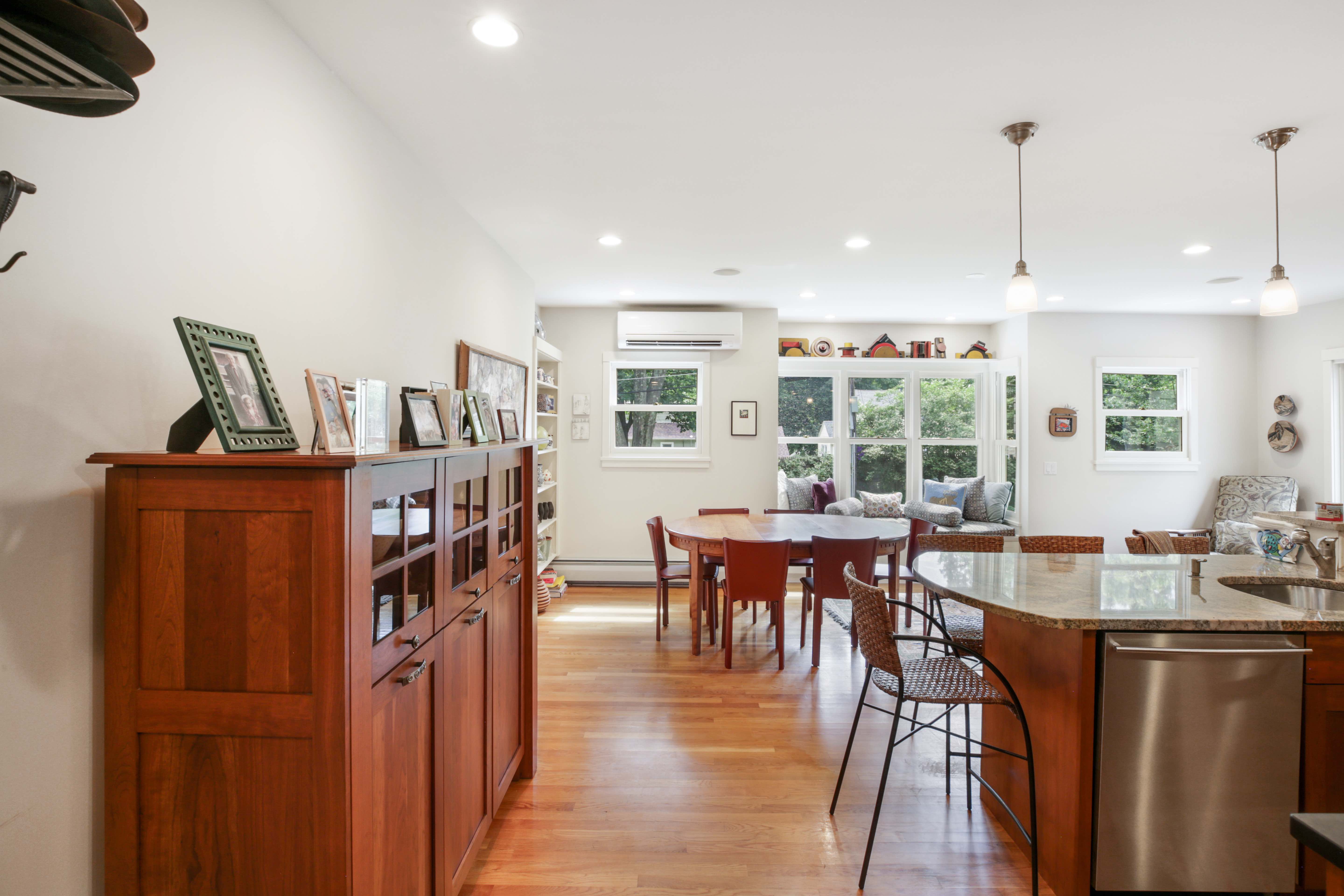
The point: While the mini-split units in your house visually stick out to you, that’s at least partly because your brain is primed to notice things that are important.
And the look of your home is—quite rightly—very important to you.
Luckily for decorating endeavors, though, you don’t necessarily need to hide the mini split for it to work in home decor—you just need to give the eye enough reason to look elsewhere.
In other words, we need to give people something more important to look at. And there are plenty of ways to do that.
Quick word to the wise, though: While you’re brainstorming how to make your mini split work with your home’s decor, keep in mind that there are some things you shouldn’t do. Mini splits are HVAC rockstars, but, ultimately, they’re still HVAC.
While you’re brainstorming how to make your mini split work with your home’s decor, keep in mind that there are some things you shouldn’t do.
No matter how you choose to hide your mini-split unit, there are a few core rules to follow.
- Don’t cover the vents with any kind of airtight seal—that would impede the flow of air and might cause condensation.
- Don’t block the top of the indoor units by setting things on them, because incoming air is pulled in through the top. Using them as a shelf (don’t do it!) would restrict the ability of the units to get good airflow.
- Keep a minimum 6″ clearance between the top of your indoor unit and anything above it, like a ceiling. Or that shelf you’d like to have. Just make sure to install any shelving or artwork 6″ above the top of the unit.
- Don’t keep anything that could be damaged by moisture too close to the indoor unit.
Similarly, don’t want to put anything electronic too close to the unit. No covering your mini split with a television set!
Not only would that be weird (“Say… why is your television emitting cool, refreshing, dehumidified and filtered air?”), but TVs really don’t like water. And with HVAC, there’s always a chance of moisture. Just say no.
On to the strategies!
Here’s how to hide a mini split—ideas and inspiration
First, let’s talk about what to do if your mini split is already installed (and you don’t want to do anything too drastic).
1. Distract from the mini split by creating a strong visual emphasis elsewhere in the room
This is probably the most common way to deal with a mini split, and it’s one of the most fun.
Remember our thought experiment from before? The reason you don’t think (for very long) about other people’s air conditioners is because they aren’t important to you and because your brain is immediately distracted by something more important.
You can do the same thing in your own home by emphasizing a strong visual element—the design term here is focal point—elsewhere in the room.
Your focal point could be anything that will catch the eye—a huge vase, a piece of bold-colored furniture, an interesting painting or photograph.
As long as it’s more eye-catching than the mini split, there’s a good chance it’ll work as a distraction. (If you need more inspiration, we really like this article on creating a focal point in your house.)
What you’re doing is creating a diversion, so… maybe have some fun? It’s a great reason to add something new to the room.
And if you’ve been wanting to add a statement piece to your home but haven’t had the perfect excuse—voila! Here it is.
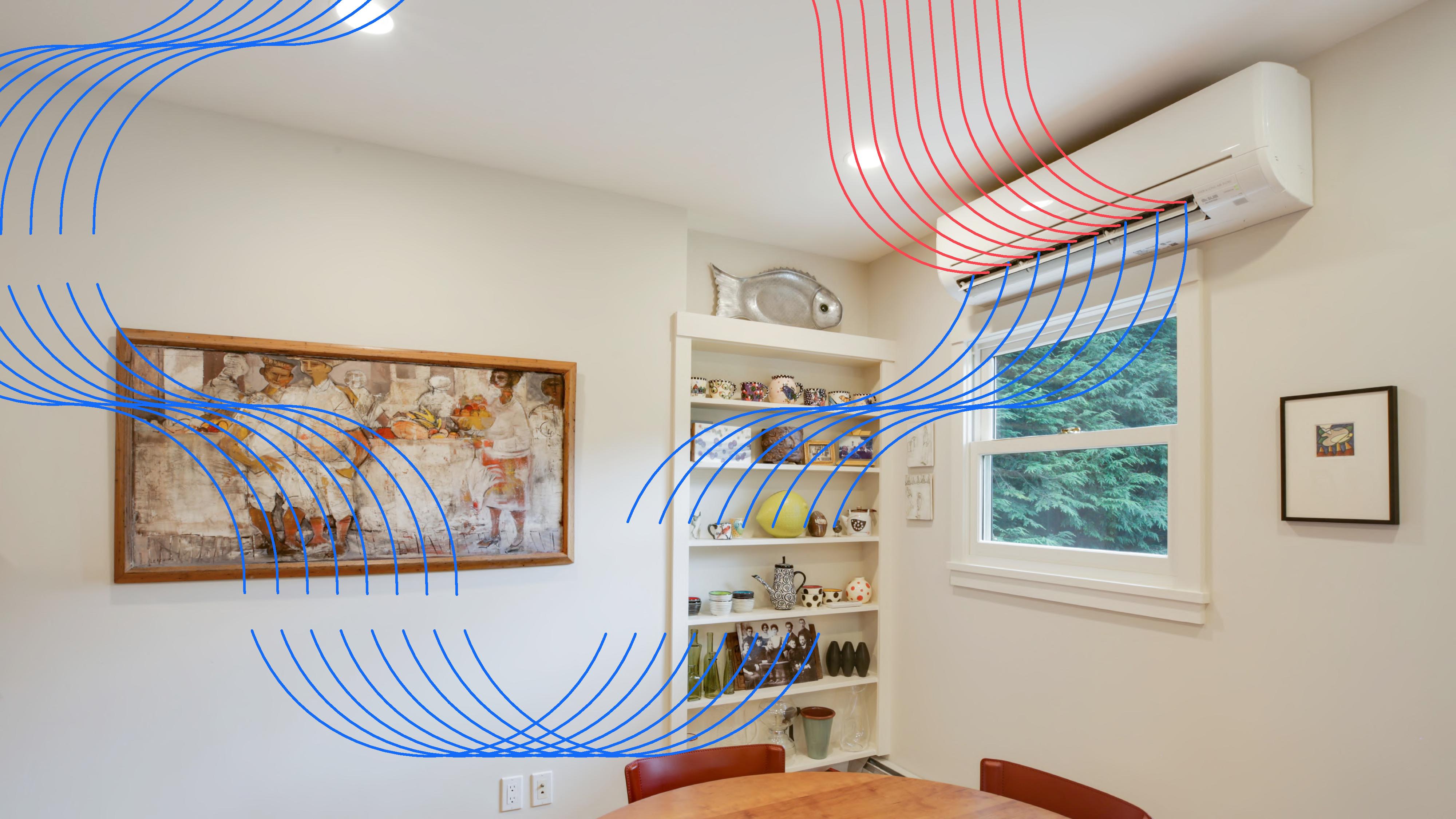
2. Use textiles or decorative covers to create a new room feature
This is basically the opposite of the previous tip. Essentially, instead of directing the eye away from the mini split, you’re going to turn it into the focal point—by covering it with a piece of hanging art.
There are a few different ways to do this. You could, for example, hang a piece of fabric that covers the unit. This is a great way to add some color and pattern to a room (as well as a bit of coziness) and works especially well when you’ve got a lot of wall space to cover.
You could also use a smaller decorative cover to hide the unit, which you can see an example of here.
Really, the sky’s the limit. Textiles are wonderfully versatile and come in all kinds of colors and textures—have fun choosing! You might even get a variety of textiles and switch them out with the seasons.
Whatever route you choose, though, make sure that the textiles are easy to remove so that you can access the unit when necessary.
3. Use plants to hide a mini-split
This is a great option if you want to add some (literal) life to your room while disguising the mini-split wall units.
The key here is to choose plants sturdy enough to stick around—you don’t want anything too small or delicate that might be damaged by the airflow—and then keep them at least two feet away from the unit itself.
And, of course, pick plants that you love and will take good care of—bonus points if you choose plants that are known to boost indoor air quality.
If you’re not sure where to start, we recommend checking out this article on choosing plants for your home. (And if you’re brand new to plant care, get some quick care tips here as well as a printable maintenance guide.)
Once you’ve got your plants, there are a few different ways to arrange them. You could create a makeshift screen by putting them in pots and lining them up in front of the unit.
Create a makeshift screen by putting plants in pots and lining them up in front of the unit.
If you’ve got lots of floor space, you could choose a few tall plants to surround the mini split, or you could hang plants from the ceiling around the mini split using decorative hangers—as long as you smartly maintain that recommended clearance from the top of the unit.
A quick note, though—this strategy is easier to pull off if you’ve already got plants in the room.
If it’s the only green space in the room, it may draw attention to the area—and you’ll have to work a little harder to ensure the attention is on your plants, rather than the mini-split unit.
Official blurb! If this is helpful so far, make sure you sign up for the Sealed newsletter below. We’ve got more ideas where this came from.
Okay. Now, we’ll turn to some ideas with a bit heavier of a lift. They’re designed to be used if you haven’t installed your mini-split system yet, so if you already have mini splits in your home, tap here to jump to the next section.
4. Install the mini split in a recess (or on the ceiling!)
This is definitely a more advanced mini-split hiding strategy, and it requires some extra work on the front end. (And careful planning with your HVAC pro.)
But if you’re up for it—and your house allows for it—it can be an effective way to make sure the mini split practically disappears.
The basic idea is to create a space in the wall that’s big enough to house the mini-split unit. This can be done by cutting out a section of drywall or, if you’re feeling really ambitious, by building a false wall.
And boom! You now have a hidden-concealed-ductless-mini-split. Completely out of sight.
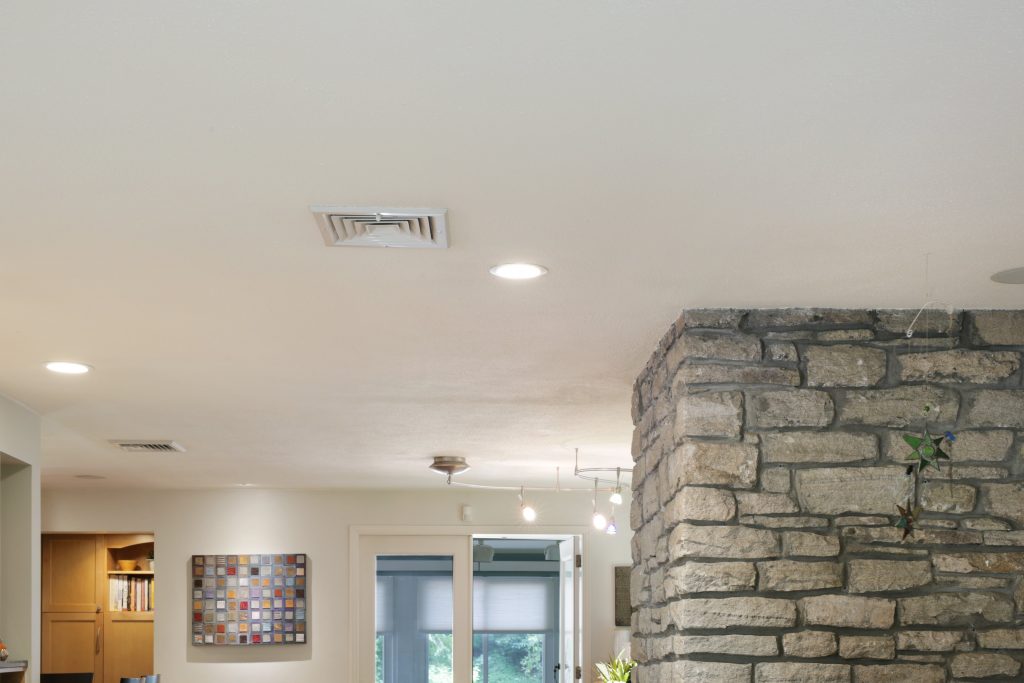
As the title of this section indicates, you can also install a mini split on the ceiling in certain circumstances via a ceiling mount mini split.
That’s an advanced option, but we can help you find the right ductless mini-split option for your home.
(Want someone to hire an expert, negotiate the cost, and oversee the whole project on your behalf—for very little upfront cost? This is what we do. At Sealed, we’re experts in this kind of work.)
5. Hide the mini-split somewhere people look less, such as a corner
This is probably the mini-split hiding strategy that most people think of, and there’s a good reason for that: It works.
One of the best things about mini-splits is that they’re relatively small and compact. That means they can easily be hidden away in a corner or behind a piece of furniture (as long as airflow isn’t blocked)—both places where people don’t tend to look much.
This is a pretty foolproof way to keep a mini split from dominating your decor, but if you’re going to go this route, make sure that the mini-split is easily accessible for when you need to clean it or perform other maintenance.
And remember that the warnings regarding airflow and moisture still apply: When it comes to mini-split “blockers,” if you have to choose between an open IKEA shelf and your family’s heirloom fainting couch… go for the shelf.
And speaking of furniture.
6. Build a cabinet or shelf around the mini-split (be sure to leave proper airflow!)
Finally, if you’re handy (or know someone who is), build a custom cabinet or wall-mounted shelf directly around the minis plit to hide it.
This is a great way to get the most use out of your space, stow away any unsightly cords, and potentially turn the space into something else that’s useful. Here are some pretty clever examples:
And here’s how to hide a mini-split outside
Ductless mini-split systems all have an outdoor condenser, which can be a bit of an eyesore in your otherwise beautiful yard. But there are a few ways you can disguise it.
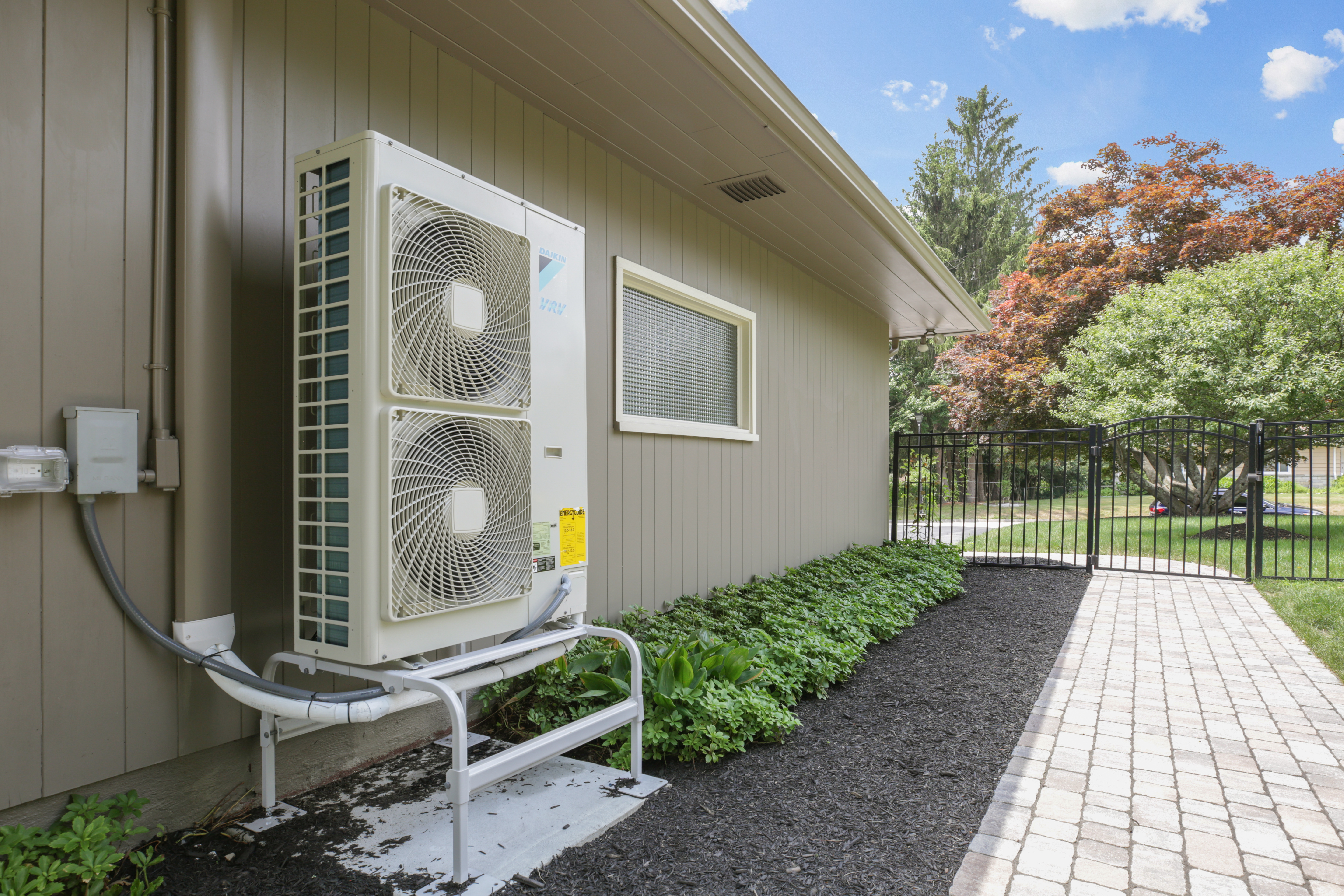
One option is to build (or buy) a cover for the condenser unit.
This can be as simple as a wooden box or screen that blends in with your other outdoor décor. They usually look something like this. (Or, if you’re feeling significantly more ambitious, you could try a more elaborate structure, like a pergola, around the unit.)
- Search Wayfair for outdoor heat pump covers
- Search Etsy for outdoor heat pump covers
- Search Amazon for outdoor heat pump covers
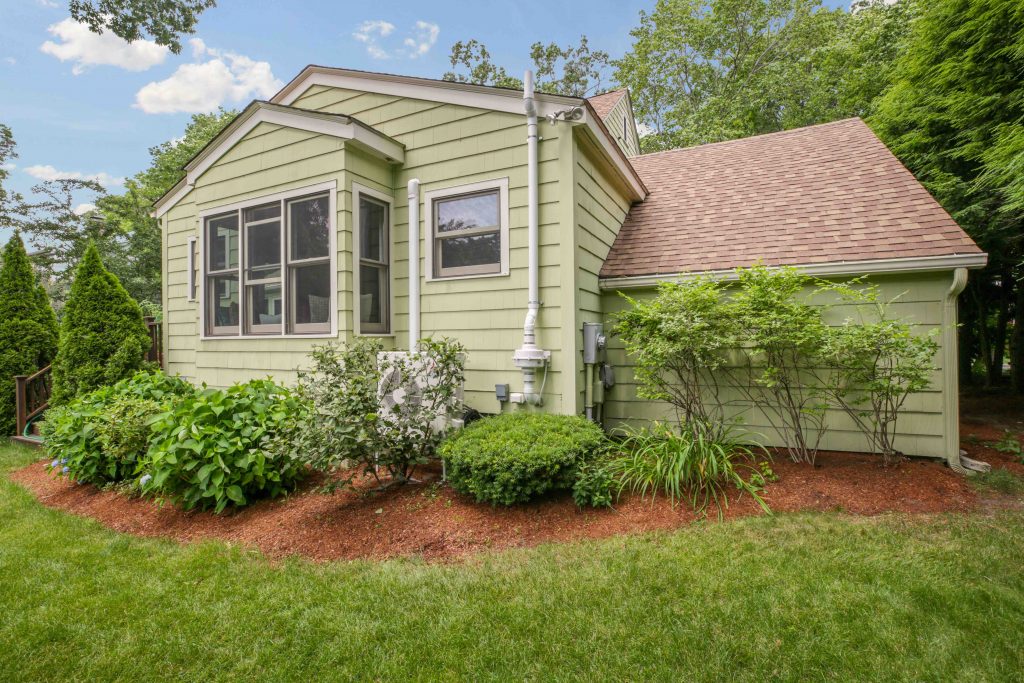
Another option is to plant a garden around the condenser.
A garden will not only hide the condenser, but it will also provide some great shade. Just make sure you choose plants that won’t interfere with the airflow around the unit.
Knockout roses and ferns are a great option, but stay away from climbing vines unless you have a good plan for redirecting them onto a trellis.
You don’t want sneaky vines creeping inside the condenser unit and wreaking havoc (and, believe us, they will if you give them a chance).
How to get maximum efficiency and comfort from your mini-split system
A quick PSA: We wouldn’t be doing our duty if we didn’t tell you a couple of ways you can support your mini-split system’s valiant efforts to keep your home cool and comfortable.
Mini splits are a super-efficient way to heat and cool your home, but with the right home improvements to support them, they can help cut significant energy waste. (If you’re curious, check out How Mini Splits Work to learn why they’re so efficient.)
Here are the top two ways to make sure your mini split can do its job.
Close up all the holes—aka air leaks—in your house
Mini splits are amazing (you know this already). But if all the air they condition escapes out of the house, they’ll be fighting an uphill battle to keep you comfortable.
If all the air your mini split works to heat and cool is escaping out of your house, it’ll be fighting an uphill battle to keep you comfortable.
So one of the most important things you can do to improve the efficiency of your mini-split system is to seal air leaks.
These are gaps in your home’s envelope—the walls, floors, ceilings, and doors—that let air escape. They can be caused by things like:
- Cracks in the foundation
- Gaps around windows and doors
- Or holes for plumbing fixtures or electrical wiring
Solution? Whole house air sealing. (If your home qualifies, you can get this done for no upfront cost through Sealed.)
By the way, if you think that air gaps aren’t a big deal, we’ve got a bit of bad news: According to Energy.gov, as much as 40% the energy you buy to heat and cool your home is lost to air leakage (1).
And since more than half of your energy bill goes to heating and cooling, a significant chunk of the money you pay each month is likely escaping right out of the gaps in your home (2).
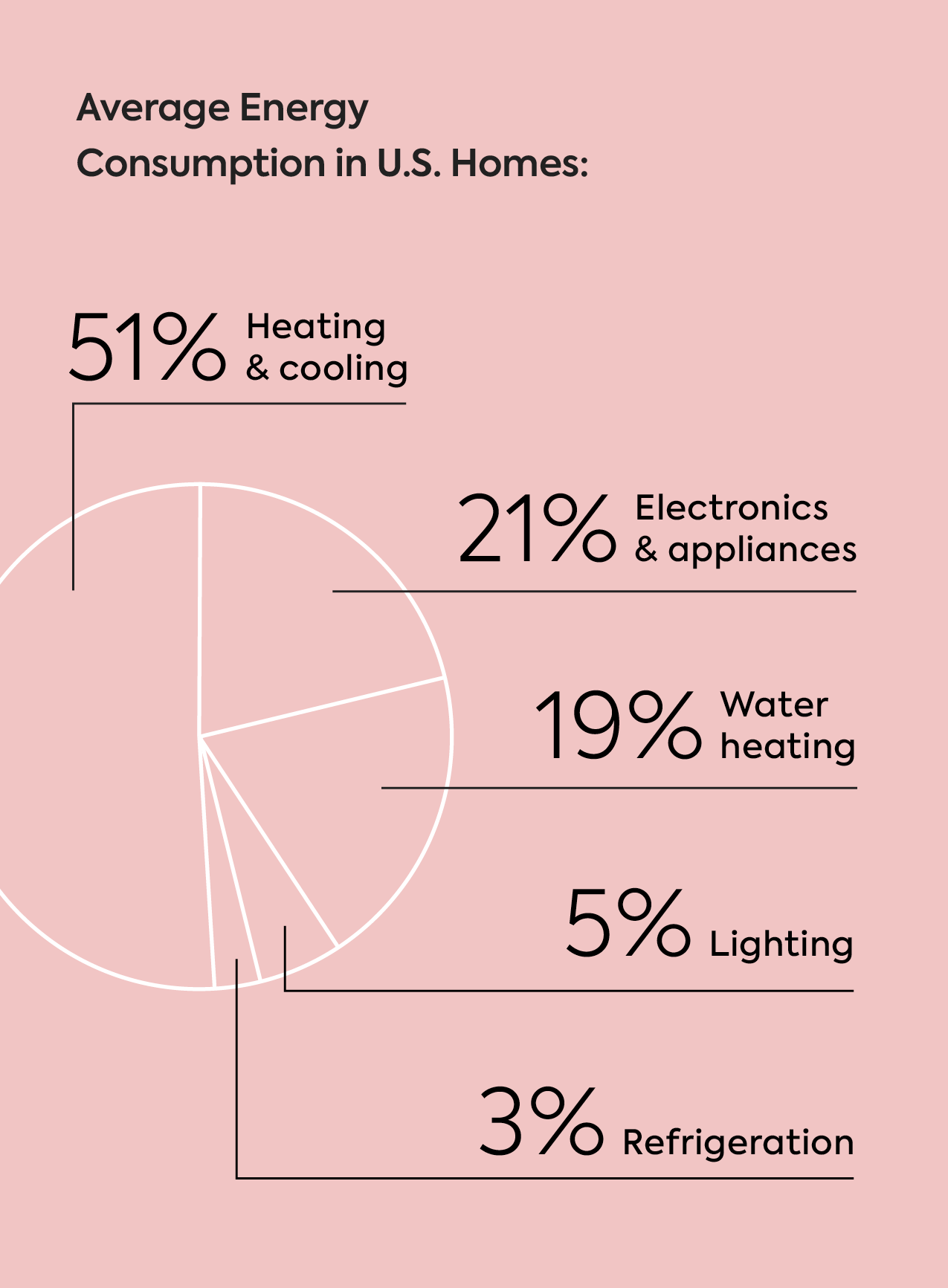
If this caught your attention, be sure to read 9 Signs that Your Home is Wasting Energy. It’s an eye-opener.
Insulate your home (especially your attic)
The second (and equally-important) way to make your mini-split’s life better is to ensure your house is properly insulated.
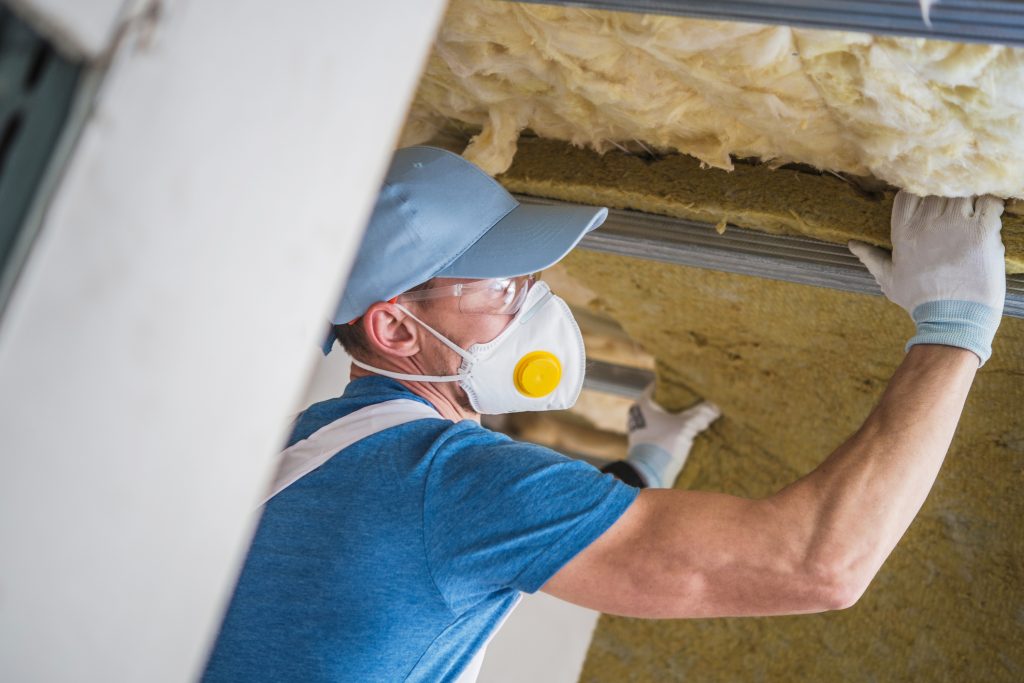
Good insulation helps keep heat in during the winter and out during the summer. It also helps reduce noise and make your home more comfortable.
And what most homeowners don’t know is that insulation wears down over time. So even if your home was professionally insulated 20 years ago (even 15 years ago), it’s likely time for an upgrade.
You can read our full attic insulation guide to learn more, but essentially the issue is this: Roof and attic insulation is especially important for keeping your home comfortable in all seasons, because a lot of unwanted air exchange happens at the top of your house.
An under-insulated house means that your mini-split system is working much harder than it should.
So if the insulation up there has expired (or if you have an older house which doesn’t have attic insulation at all), you’re in for some chilly winters and hot, stuffy summers.
More to the point: An under-insulated house means that your mini-split system is working much harder than it should.
So be kind to your hardworking HVAC system! Insulate your home correctly. (Actually, we recommend having professionals do it. We know the very best.)
Get the home you—and your mini-split system—deserve. At no (or very little!) upfront cost.
If you’re here, you’ve probably already got a mini-split system—or you’re about to install one. If so, congratulations! You’re already well ahead of the HVAC game.
(Haven’t purchased a mini split yet? If your home qualifies, you may be able to get one with Sealed for no, or very little, upfront cost. You pay for your new mini-split HVAC system in a way that works best for you and your budget, and we’ll give you an energy-savings guarantee if your house is eligible.)
And if your house hasn’t been air-sealed or insulated in the last ten years or so, it almost certainly isn’t as efficient (or comfortable) as it could be.
That means it’s definitely overworking your mini-split system and causing it to age faster.
If you’d like to fix that, allow us to throw our hat in the ring.
At Sealed, we’re climate control nerds—and we know what it takes to make your home as comfortable and energy efficient as possible.
Since we don’t do cookie-cutter solutions, we’ll analyze your current situation, design a custom home upgrade plan, hire expert contractors, and oversee the whole project.
And we’ll just reiterate here, again: We manage the whole project for you, and you’ll get an energy-savings guarantee if your house is eligible. Yes, you read that right.
If I don’t have to spend any extra money to get a huge improvement to my home, it’s just a no brainer at that point.
Scott R., Sealed Customer
We’ll do all the stressful stuff. You enjoy a completely optimized (and completely comfortable!) home.
It’s a great plan that Sealed customers love. And you can see if you qualify—right now—in two minutes.
FAQs about how to hide a mini-split
- Should you cover a mini split?
- How do I hide my outdoor mini-split condenser?
- Should I cover my mini split in winter?
Should you cover a mini split?
It’s possible to cover a mini split, but it’s not recommended in all instances and there are some major caveats. Basically: If you do cover it, make sure there is plenty of airflow around the unit—no airtight seals! (Get full advice by tapping here.)
How do I hide my outdoor mini-split condenser?
There are a few ways to do this, but the most common is to plant tall shrubs or bushes around it. This will help to camouflage the unit and also provide some protection from the elements. Just make sure you leave plenty of space around the unit for airflow and access.
Need another option? Go for a condenser cover. They come in a lot of styles, so you’ve got a good shot at finding one to match your outdoor decor.
Should I cover my mini split in winter?
It’s not necessary to cover your outdoor mini-split unit in winter, but it can help to extend its lifespan and keep the snow off the unit (which can improve your system’s efficiency).
While we’re on the subject of snow, though, check to see how far your outdoor unit is from the ground. The general recommendation is that mini-split units be at least two feet off the ground for optimal protection—this helps keep the condenser unit away from ground snow and improve its efficiency.